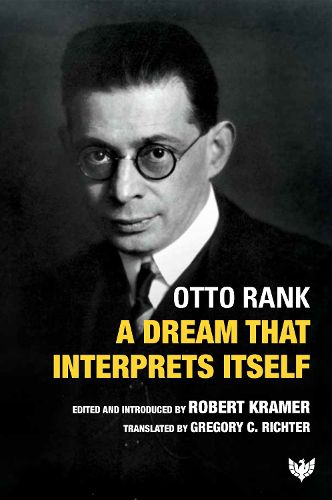Readings Newsletter
Become a Readings Member to make your shopping experience even easier.
Sign in or sign up for free!
You’re not far away from qualifying for FREE standard shipping within Australia
You’ve qualified for FREE standard shipping within Australia
The cart is loading…






Otto Rank, Sigmund Freud's closest colleague in Vienna during the formative years of psychoanalysis, published the essay 'A Dream That Interprets Itself' in 1910. It was praised highly by Freud, and the seminal essay now appears for the first time in English with an expertly crafted introduction from Robert Kramer about Rank and his work. Sigmund Freud hired Otto Rank as his secretary and funded Rank's PhD in literature at the University of Vienna. In 1910, at age 26, Rank published 'A Dream That Interprets Itself'. Freud could not praise the essay highly enough; impressed by Rank's erudition, Freud invited his protege to contribute two chapters, on poetry and myth, in 1914 to The Interpretation of Dreams. Thereafter, Rank's name would appear under Freud's on the title page of the foundational text of psychoanalysis for the next fifteen years. Grateful for Freud's generosity, Rank published a stream of articles and books advancing psychoanalytic thinking into almost every area of the arts and humanities, thus demonstrating to Freud's critics that the validity of psychoanalysis did not hinge solely on his autobiographical work The Interpretation of Dreams. Rank died in 1939 and his work fell out of favor until a renaissance of interest beginning in the 1970s. This is the first English translation of Rank's masterpiece of dream interpretation, originally published in 1910 as ?Ein Traum, der sich selbst deutet? in the journal Jahrbuch fuer Psychoanalytische und Psychopathologische Forschungen, 2(2): 465?540. It is accompanied by an in-depth introduction from editor Robert Kramer, the world's only Rankian psychologist. The book is essential reading for all psychoanalytic scholars, practitioners, and historians, and those interested in dream analysis. AUTHOR: Freud considered Otto Rank to be the most brilliant of his disciples. With access to the master's most intimate thoughts and feelings, Rank contributed two chapters to The Interpretation of Dreams in 1914. His name would appear below Freud's on the title page for the next 15 years.
$9.00 standard shipping within Australia
FREE standard shipping within Australia for orders over $100.00
Express & International shipping calculated at checkout
Otto Rank, Sigmund Freud's closest colleague in Vienna during the formative years of psychoanalysis, published the essay 'A Dream That Interprets Itself' in 1910. It was praised highly by Freud, and the seminal essay now appears for the first time in English with an expertly crafted introduction from Robert Kramer about Rank and his work. Sigmund Freud hired Otto Rank as his secretary and funded Rank's PhD in literature at the University of Vienna. In 1910, at age 26, Rank published 'A Dream That Interprets Itself'. Freud could not praise the essay highly enough; impressed by Rank's erudition, Freud invited his protege to contribute two chapters, on poetry and myth, in 1914 to The Interpretation of Dreams. Thereafter, Rank's name would appear under Freud's on the title page of the foundational text of psychoanalysis for the next fifteen years. Grateful for Freud's generosity, Rank published a stream of articles and books advancing psychoanalytic thinking into almost every area of the arts and humanities, thus demonstrating to Freud's critics that the validity of psychoanalysis did not hinge solely on his autobiographical work The Interpretation of Dreams. Rank died in 1939 and his work fell out of favor until a renaissance of interest beginning in the 1970s. This is the first English translation of Rank's masterpiece of dream interpretation, originally published in 1910 as ?Ein Traum, der sich selbst deutet? in the journal Jahrbuch fuer Psychoanalytische und Psychopathologische Forschungen, 2(2): 465?540. It is accompanied by an in-depth introduction from editor Robert Kramer, the world's only Rankian psychologist. The book is essential reading for all psychoanalytic scholars, practitioners, and historians, and those interested in dream analysis. AUTHOR: Freud considered Otto Rank to be the most brilliant of his disciples. With access to the master's most intimate thoughts and feelings, Rank contributed two chapters to The Interpretation of Dreams in 1914. His name would appear below Freud's on the title page for the next 15 years.